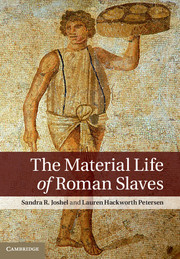Chapter 1 - Introduction
Published online by Cambridge University Press: 05 November 2014
Summary
In 79 CE before the eruption of Vesuvius buried the city of Pompeii, the prostitutes in the Large Brothel (VII.12.18) and the workers in a wool-treatment shop (VII.12.17) were next-door neighbors, the entryways of their places of business opening on Vicolo del Lupanare (Figs. 1–2). Both the sex workers and the wool workers were in all likelihood slaves. Side by side, brothel and workshop reveal something of the material life of two groups of slaves in ancient Roman society: at the least, their arrangements of space and equipment show us something of the material conditions of their laborers. In the brothel, prostitutes serviced their customers in the five cramped cubicles, each with its own masonry bed, opening off a central hallway. The erotic paintings on the walls above the doorways, which show couples in different sexual positions, may well display the sex acts performed by the women. Some 134 separate graffiti name sexual activities, the male customers, and the women themselves. There are no surviving pictures of the work in the wool-treatment shop, only a list or calculations written in charcoal and now no longer visible. What exactly took place in the workshop – fulling, dyeing, wool washing – has been the subject of scholarly debate. Yet the features of the shop point to the kinds of movements of the workers and even to their tasks: two large basins; a hearth; a long, low counter with two lead-lined bowls heated by built-in furnaces beneath; and a room with nail holes, perhaps for hanging lines.
- Type
- Chapter
- Information
- The Material Life of Roman Slaves , pp. 1 - 23Publisher: Cambridge University PressPrint publication year: 2014



